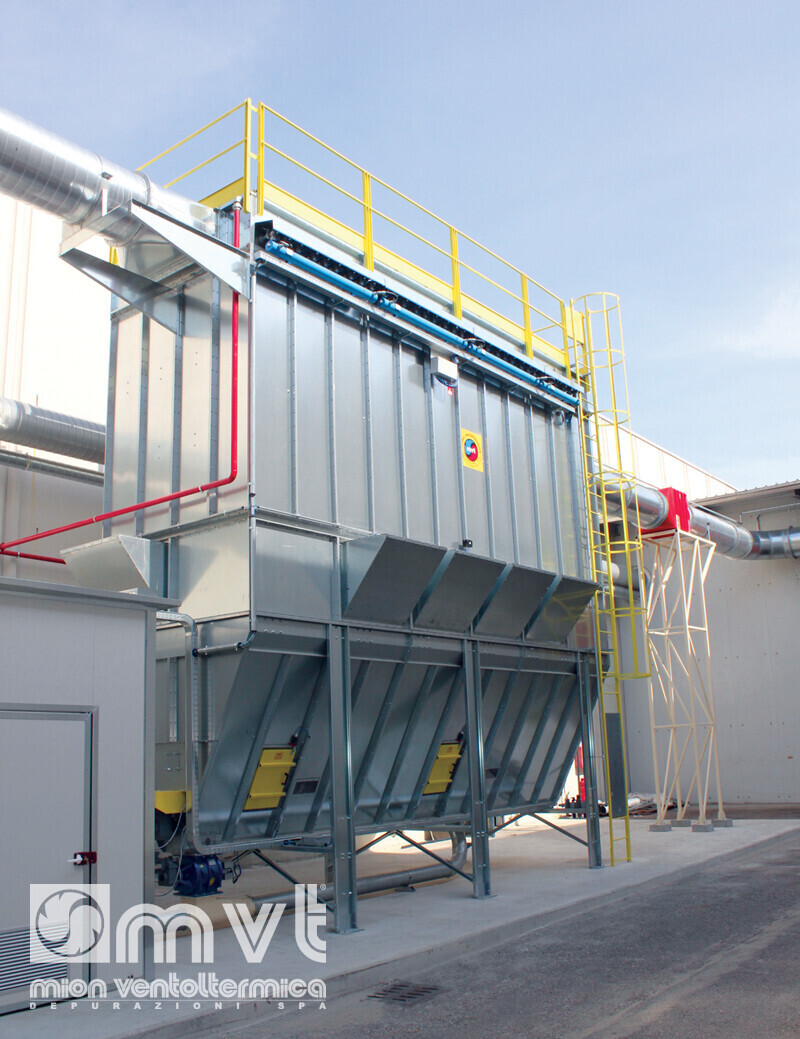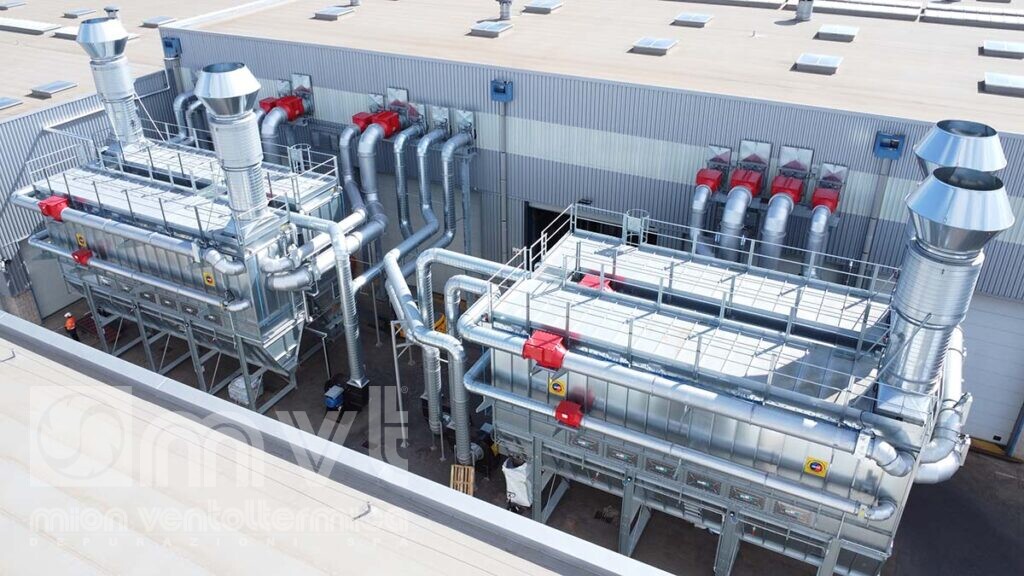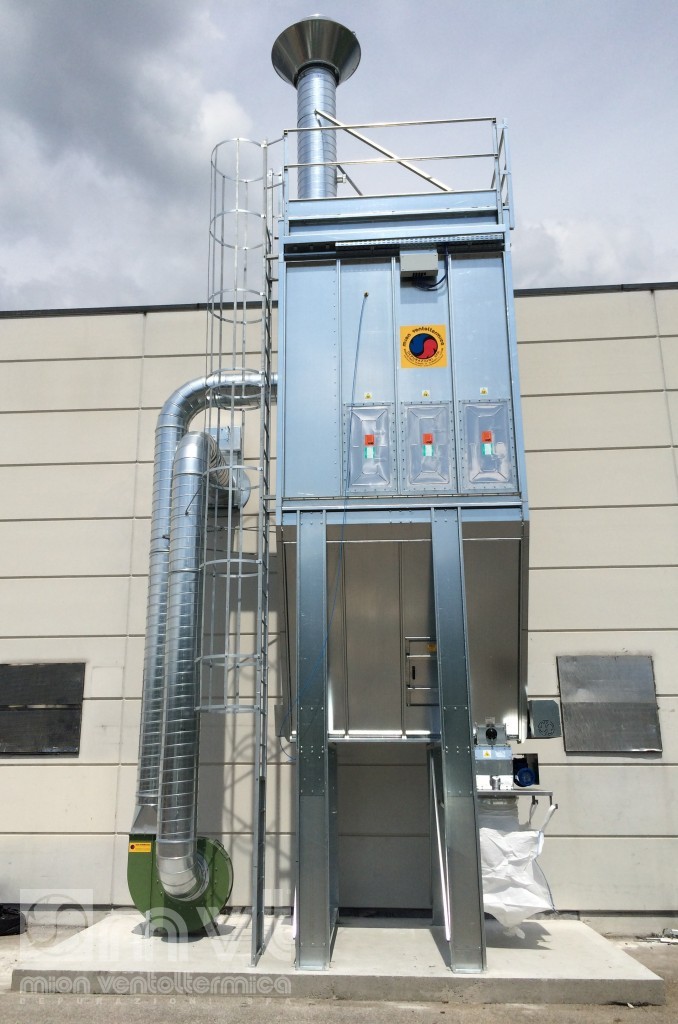Further Details
The self-cleaning bag filter consists of four main parts:
- the head, which is the upper part of the bag filter, provided with the following:
- the tank and all the air distribution pipe fittings;
- the fire fighting pipes and the fire fighting water system;
- the filtering battery, including the central part fitted with:
- the sleeves;
- the settling chamber;
- the connection plugs of the plant;
- the box where the explosion-proof panels are placed;
- the containment hopper, where the filtered material falls, including the lower part with the following:
- the screw conveyor for the extraction of material;
- any scrapers and the motorized units.
The star valve is fitted below the hopper and can be motorized autonomously or in line with the screw conveyor.
If the processing involves potentially explosive dust, the self-cleaning bag filters are developed and manufactured by Mion Ventoltermica in accordance with EU Directive 2014/34/EU (ATEX Directive).
ADVANTAGES OF BAG FILTER:
- reduction of the emissions of pollutants into the atmosphere in order to respect the limits established by the law;
- filtration of dust flows which would compromise correct operation and efficiency of any subsequent scrubbing stages such as biofiltration or activated carbon filtration;
- recovery of the processing waste for reintroduction into the production process of the company or use as fuel;
- there is no storage deposit as the material is continuously extracted, reducing the risk of fire.















